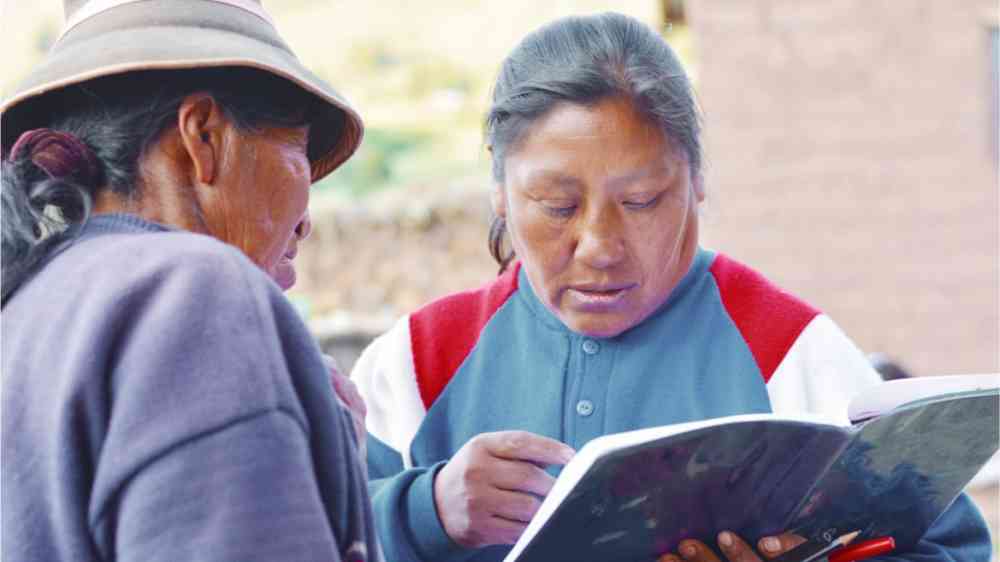Understanding an extreme weather event with science and local knowledge

Alejandro Sauceda remembers the smell of withered herbs in his garden and the feel of cold wind on his face in February 2011. As a ranger in the Monte Mojino Reserve in Sonora, Mexico, Sauceda was one of the first people to observe damage to the forest caused by this extreme climate event. The Mexican government ultimately declared a regional state of emergency.
During the first 4 days of February 2011 Mexico’s National Weather Service recorded average temperatures between −5°C and −10°C in the northern states of Chihuahua, Durango, and Sonora. Some local newspapers dubbed this abnormal event the “Black Frost” because of its severe consequences. In the United States, the extreme cold snap was known as the “Groundhog Day Blizzard.”
“We may not know the scientific names of plants or animals, but we know the common names. We can help [the researchers] because we know” where specific plants are.
At the time, Juan Carlos Álvarez Yépiz, an ecologist at the Technological Institute of Sonora (ITSO), was working on his doctorate in New York. But as soon as he returned to Sonora, he began researching the effects of the freeze on the Sierra de Alamos–Rio Cuchujaqui Biosphere Reserve, which includes the Monte Mojino Reserve where Sauceda works. What he found was patches of dead trees throughout the forest.
Álvarez Yépiz’s research focused on the ecological effects of the freeze, but he felt that studies like his often left out the social aspect of the extreme events they analyzed. This concern led him to reach out to affected communities in the area around the biosphere to better assess their vulnerability.
Álvarez and his team implemented a methodology to integrate the knowledge and perceptions of two rural communities with scientific evidence to better understand the vulnerability of the community to climate-induced changes in the forest on which they depend. Their findings were published in the journal Weather and Climate Extremes.
Sauceda’s help was key to collecting data on the biosphere’s frost-damaged plants. He guided Álvarez and his team through the forest to find damaged and healthy patches. “We know these places. We may not know the scientific names of plants or animals, but we know the common names. We can help [the researchers] because we know” where specific plants are and how they are affected, explained Sauceda, whose duties at the Monte Mojino Reserve include monitoring terrain, maintaining trails, and assisting visiting scientists.
Integrating community knowledge
In addition to the ecological data collected with formal techniques, Álvarez and the other authors decided to conduct interviews with two communities: Sabinito Sur, located in the center of the biosphere reserve, and Cerro Colorado, from outside the protected area.
Rafael Angel Arenas Wong, an ecologist with ITSO and lead author of the paper, went to these communities and knocked on doors to conduct 75 interviews. The results were then analyzed to identify patterns and insights into the effects of the frost.
After integrating the communities’ knowledge with ecological data, researchers found that local perceptions of the frost matched the results of their field surveys. In Sabinito Sur, 13 of the 21 species identified by scientists as affected by the extreme event were also identified by the residents, whereas in Cerro Colorado, residents identified 4 of the 8 affected species identified by the scientists.
The interviews also allowed the researchers to determine the importance of different species to residents’ daily activities. The villagers perceived a reduction in the availability of wood, which they use to build fences and make charcoal, among other things. In Sabinito Sur, people identified 41 useful plant species, whereas outside the reserve, in Cerro Colorado, they identified 27.
Widespread tree mortality has had a direct impact on the lives of these communities. Sauceda explained that as healthy stands of trees become more remote, residents “have to spend more fuel to access these woods. They are farther and farther away. This forest takes a long time to recover, besides the fact that other types of vegetation are already growing, like some thorny bushes” that often outcompete woody species.
Valuing local knowledge
“To reduce local knowledge to being worthless until it is verified and validated by my academic methods is disrespectful.”
When scientists reach out to communities, they can sometimes fall short in integrating both sources of knowledge, noted Tuyeni Heita Mwampamba, an ecologist and community forest expert at the National Autonomous University of Mexico. “Local knowledge is wisdom generated by years and decades of interaction with nature. To reduce it to being worthless until it is verified and validated by my academic methods is disrespectful,” she said.
Mwampamba stressed that this approach of validating local knowledge with scientific approval, as opposed to integrating local knowledge into an equitable, cocreated data set, can cause harm. Regional knowledge can actually be lost, she explained: National reserves are important, for example, but when government conservation agencies apply the same formula to all forests, traditional wisdom regarding management of specific areas can be lost.
“There is work that shows that when the relationship becomes highly instrumentalized, these other less tangible connections begin to disappear or are not as present” in conservation discourse, she warned. Such connections include a view of nature as something worth protecting for its own sake and for the sake of future generations, a spiritual relationship with the forest, and social ties around activities such as communal work.
Mwampamba sees the study in Sabinito Sur and Cerro Colorado as a step in the right direction. However, she believes there’s still room to better integrate the communities into the scientific endeavor.
The researchers tend to agree. Arenas said that an important concern for him is making his research more accessible to the people who helped him. Álvarez emphasized that in studies like this, local communities “need to be involved from the planning stage, along with all the other stakeholders,” such as nongovernmental organizations and government officials.
